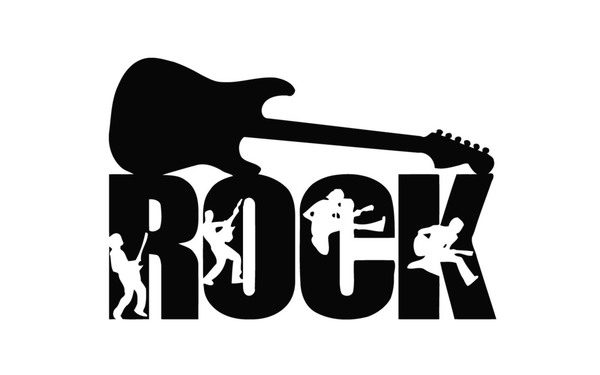Damon Linker of The Week reports:
Rock music isn’t dead, but it’s barely hanging on. This is true in at least two senses.
Though popular music sales in general have plummeted since their peak around the turn of the millennium, certain genres continue to generate commercial excitement: pop, rap, hip-hop, country. But rock — amplified and often distorted electric guitars, bass, drums, melodic if frequently abrasive lead vocals, with songs usually penned exclusively by the members of the band — barely registers on the charts.
There are still important rock musicians making music in a range of styles — Canada’s Big Wreck excels at sophisticated progressive hard rock, for example, while the more subdued American band Dawes artfully expands on the soulful songwriting that thrived in California during the 1970s. But these groups often toil in relative obscurity, selling a few thousand records at a time, performing to modest-sized crowds in clubs and theaters.
But there’s another sense in which rock is very nearly dead: Just about every rock legend you can think of is going to die within the next decade or so…
…Behold the killing fields that lie before us: Bob Dylan (78 years old); Paul McCartney (77); Paul Simon (77) and Art Garfunkel (77); Carole King (77); Brian Wilson (77); Mick Jagger (76) and Keith Richards (75); Joni Mitchell (75); Jimmy Page (75) and Robert Plant (71); Ray Davies (75); Roger Daltrey (75) and Pete Townshend (74); David Gilmour (73); Rod Stewart (74); Eric Clapton (74); Debbie Harry (74); Neil Young (73); Van Morrison (73); Bryan Ferry (73); Elton John (72); Don Henley (72); James Taylor (71); Jackson Browne (70); Billy Joel (70); and Bruce Springsteen (69, but turning 70 next month)…
…From the beginning, rock music has been an expression of defiance, an assertion of youthful vitality and excess and libido against the ravages of time and maturity….
…Rock music was always a popular art made and consumed by ordinary, imperfect people. The artists themselves were often self-taught, absorbing influences from anywhere and everywhere, blending styles in new ways, pushing against their limitations as musicians and singers, taking up and assimilating technological innovations as quickly as they appeared. Many aspired to art — in composition, record production, and performance — but to reach it they had to ascend up and out of the muck from which they started.
Before rock emerged from rhythm and blues in the late 1950s, and again since it began its long withdrawing roar in the late 1990s, the norm for popular music has been songwriting and record production conducted on the model of an assembly line. This is usually called the “Brill Building” approach to making music, named after the building in midtown Manhattan where leading music industry offices and studios were located in the pre-rock era. Professional songwriters toiled away in small cubicles, crafting future hits for singers who made records closely overseen by a team of producers and corporate drones. Today, something remarkably similar happens in pop and hip-hop, with song files zipping around the globe to a small number of highly successful songwriters and producers who add hooks and production flourishes in order to generate a team-built product that can only be described as pristine, if soulless, perfection.
This is music created by committee and consensus, actively seeking the largest possible audience as an end in itself. Rock (especially as practiced by the most creatively ambitious bands of the mid-1960s: The Beatles, The Rolling Stones, The Kinks, and the Beach Boys) shattered this way of doing things, and for a few decades, a new model of the rock auteur prevailed….rock bands and individual rock stars were given an enormous amount of creative freedom, and the best of them used every bit of it. They wrote their own music and lyrics, crafted their own arrangements, experimented with wildly ambitious production techniques, and oversaw the design of their album covers, the launching of marketing campaigns, and the conjuring of increasingly theatrical and decadent concert tours.
This doesn’t mean there was no corporate oversight or outside influence on rock musicians. Record companies and professional producers and engineers were usually at the helm, making sure to protect their reputations and investments. Yet to an astonishing degree, the artists got their way…
…Like all monumental acts of creativity, the artists were driven by an aspiration to transcend their own finitude, to create something of lasting value, something enduring that would live beyond those who created it…
…It was all a lie, but it was a beautiful one. The rock stars’ days are numbered. They are going to die, as will we all. No one gets out alive. When we mourn the passing of the legends and the tragic greatness of what they’ve left behind for us to enjoy in the time we have left, we will also be mourning for ourselves.
Read more at The Week.


28 Responses
“RTunes68” man, I was thinking the exact same thing! Rock is now a niche form of music is spot on. And tastes in music are always cyclical, the only constant being that “pop music” will always dominate because of mainstream appeal.
did someone know something about eddie money when they wrote this?
…………..and then ric ocasek…………. somehow tony bennett keeps plugging away.